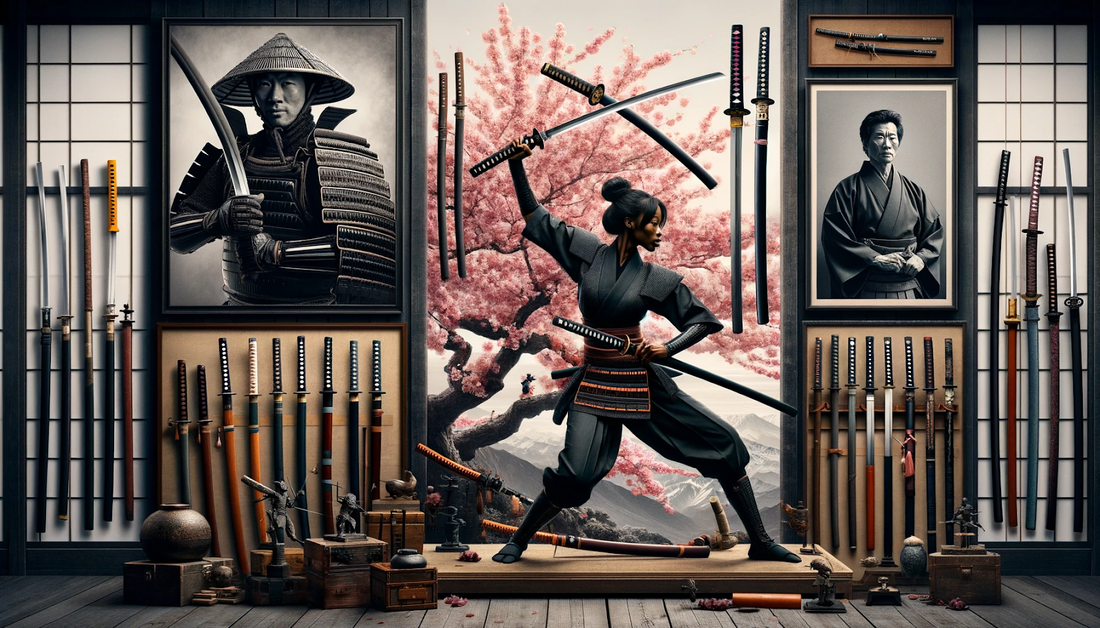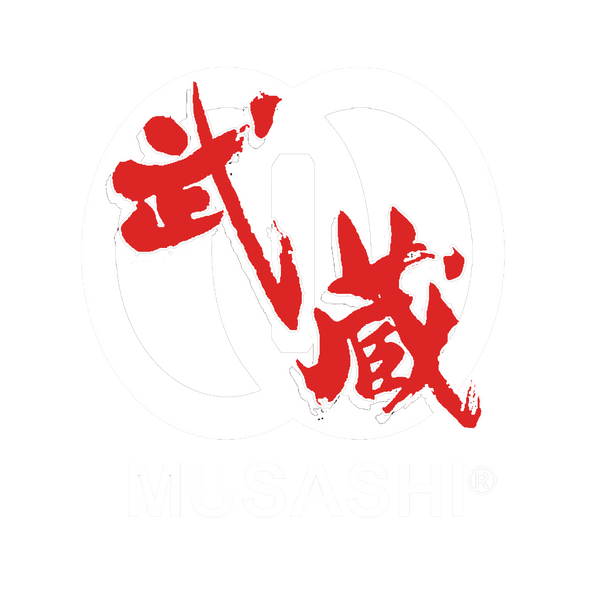
How Much Do Katanas Cost: A Comprehensive Guide
Share
Welcome to the captivating world of katanas, a subject that enthralls martial arts enthusiasts, collectors, and aficionados of cultural history alike. The katana, more than just a sword, symbolizes tradition, artistry, and the warrior ethos deeply rooted in Japanese culture. In this exploration, we delve into what makes katanas so revered and sought after, unraveling their allure and significance.
The katana often called the samurai sword, is renowned for its distinctive appearance: a slender, single-edged blade with a moderate curve and a long grip to accommodate two hands. Historically, it emerged in the late Kamakura Period (1185–1333) and was primarily used by the samurai, the warrior class of feudal Japan.
The katana was more than a weapon; it symbolized the samurai's honor, status, and soul. This reverence for the katana has transcended time, making it an enduring icon of Japanese heritage.
Beyond its physical attributes, the katana is celebrated for its craftsmanship. The traditional method of forging a katana involves a complex process of folding and tempering steel, creating a blade unparalleled in sharpness and resilience. This artistry passed down through generations of skilled swordsmiths imbues each katana with a unique character and story.
As we explore how much katanas cost, it is crucial to appreciate their historical significance and the deep cultural reverence they command. From the hands of master swordsmiths to the collections of enthusiasts worldwide, the katana remains a testament to the enduring legacy of Japanese craftsmanship and the samurai spirit.
Join us as we uncover the factors that determine the value of these exquisite blades and guide you through the diverse world of katana pricing.

Understanding the Katana: A Brief History and Characteristics
The katana, a sword steeped in history and legend, originated in feudal Japan. Its evolution is a tale of both necessity and artistry. Initially, Japanese swords were straight and were influenced by Chinese and Korean designs.
However, as the samurai class rose to prominence during the late Kamakura Period, the demand for a more effective weapon led to the birth of the katana.
Characterized by its distinctive curved blade, the katana was designed for swift, precise cuts, reflecting the changing nature of combat. This curve, typically about one inch, was ideal for the samurai's mounted and foot-based combat techniques. The katana's single-edged blade also set it apart from other swords of the era, allowing for a cleaner, more efficient cutting motion, a necessity in battle.
Another distinguishing feature of the katana is its size and construction. Typically, the blade length varies between 60 and 80 centimeters, perfectly balanced to allow for fluid, controlled movements.
The katana's unique construction method involves a meticulous forging process where the steel is repeatedly heated, hammered, and folded. This strengthens the blade and creates the distinctive wavy pattern, known as the Hamon, on its edge, a hallmark of a traditionally crafted katana.
Factors Influencing the Cost of Katanas
Material Quality:
The choice of steel and other materials is critical in determining a katana's cost. Traditional katanas are made using tamahagane steel, a material known for its purity and strength derived from iron sand.
The labor-intensive process of creating tamahagane contributes to the higher cost of these swords. In contrast, modern replicas often use various types of steel that are less expensive and easier to source, thus reducing the overall cost.
Craftsmanship and Artistry:
The level of craftsmanship and artistry involved in making a katana significantly impacts its price. A swordsmith's skill in shaping, tempering, polishing the blade, and creating the hamon adds aesthetic and functional value.
Katanas that are handcrafted using traditional methods demand a higher price due to the time, skill, and meticulous attention to detail required in their creation.
Authenticity and Age:
Authentic, antique katanas, especially those crafted by renowned swordsmiths, fetch higher prices. Their value lies in their historical significance, age, and the legacy of the swordsmith.
Conversely, modern replicas, although sometimes made with great skill, are less expensive as they lack historical value and are often produced in larger quantities. Collectors and enthusiasts often seek traditionally made old and new katanas for their authenticity and adherence to historical crafting techniques.

Price Ranges: From Affordable Replicas to Priceless Antiques
The world of katanas presents a fascinating spectrum of prices, reflecting the diversity in quality, authenticity, and historical value. Look at the different price ranges, from entry-level replicas to priceless antiques.
Entry-Level Katanas: Ideal for beginners or those seeking a decorative piece, entry-level katanas are often mass-produced. These swords are typically made from stainless steel and lack the traditional craftsmanship of authentic katanas.
They are suitable for decorative purposes or light, non-contact practice. Prices for these replicas usually range from as low as $50 to around $200. While they offer the aesthetic semblance of a katana, they lack the durability and balance suitable for serious martial arts training.
Mid-Range Katanas: Mid-range katanas are a great option for martial arts students and enthusiasts seeking a more authentic experience without breaking the bank. These swords often use more authentic techniques and better-quality materials than entry-level replicas.
They can be semi-custom with options for different fittings and finishes. Typically, these katanas are made from high-carbon steel and are suitable for martial arts training. Prices can range from $200 to $1,000, depending on the customization level and craftsmanship quality.
High-End Katanas: At the pinnacle are the high-end katanas, which include traditionally made swords by skilled artisans, collector’s items, and antique katanas with historical value. These are crafted using traditional Japanese methods involving intricate folding and tempering steel processes.
The prices for these katanas can start from a few thousand dollars and can go up to tens of thousands or even more for antiques or rare collector pieces. These katanas are prized for their craftsmanship, historical significance, and artistry.
Where to Buy a Katana and What to Look For
When purchasing a katana, the source is as important as the sword. Here’s how you can find a reputable source and what to look out for:
Reputable Sources: For authentic katanas, consider specialized martial arts weaponry shops, reputable online sword dealers, and well-known auction houses. Websites of established swordsmiths can also be valuable sources, especially for high-end katanas. When looking for antiques, engaging with established auction houses or antique dealers specializing in Japanese artifacts is advisable.
Verifying Authenticity and Quality: For mid-range and high-end katanas, ensure the blade is made of high-carbon or traditional tamahagane steel. Look for signs of craftsmanship, such as a visible hamon (the temper line) and a well-balanced blade. For antiques, provenance and historical documentation are key in verifying authenticity.
Ensuring a Fair Deal: Read reviews and seek recommendations from the martial arts community or collectors’ forums. It’s important to compare prices across different vendors for similar types of katanas. Always inquire about the return policy, and don’t hesitate to ask for detailed information or additional pictures of the sword.
Remember, buying a katana is not just a purchase; it’s an investment in a piece of art and history. Taking the time to research and understand what you are buying will enhance the value of your acquisition, whether it's for practice, collection, or simply an appreciation of its artistry.
Maintaining Your Katana: Additional Costs to Consider
Owning a katana isn’t just about the initial purchase; it’s a commitment to preserving art and history. Proper maintenance and storage are crucial to protect your investment and ensure the longevity of the blade. Ignoring these aspects can lead to damage like rust, dullness, and deterioration of materials, which diminish the value and functionality of the katana.
Maintenance Kits: Regular cleaning and oiling are essential to keep your katana pristine. Specialized katana maintenance kits, which typically include blade oil, powder, and cloths for cleaning, are available and can range from $20 to $50. These kits help prevent rust and keep the blade in optimal condition.
Proper Storage: The way you store your katana significantly impacts its preservation. A horizontal display stand, which prevents the curvature of the blade from warping, can cost anywhere from $25 to over $100 for more ornate designs. Additionally, consider the environment where you store your katana; it should be a dry place with a stable temperature to prevent moisture buildup.
Restoration Services: Professional restoration may be required if your katana suffers damage or severe wear. These services can range from minor repairs to extensive refurbishments, with costs varying widely based on the extent of work needed. Basic polishing starts around $100, but full restoration services can easily run into the thousands, especially for antique or traditionally made katanas.
The Legal Aspect: Owning a Katana
The legality of owning a katana can vary significantly across different countries and even within regions of the same country. It's crucial for potential owners to familiarize themselves with these laws to avoid legal complications.
Ownership Laws: In some places, owning a katana is subject to specific restrictions. For instance, countries like the UK have strict laws requiring a license or proving the katana was traditionally hand-forged. Other countries may have age restrictions or require registration of the weapon.
Carrying and Transport: The rules regarding carrying and transporting a katana are typically stringent. Carrying a katana in public without a valid reason, such as transport to a martial arts class or an exhibition, is generally illegal. Always use a secure, non-transparent case for transportation to avoid misunderstandings.
International Purchase and Shipping: If you’re considering purchasing a katana from another country, be aware of import laws. Some countries have strict customs regulations regarding importing blades, which can lead to complications or even confiscation of the sword.
Understanding and adhering to these legal considerations is essential for any katana owner. It ensures your compliance with the law and the respect and preservation of these remarkable weapons' cultural and historical significance.
Conclusion
In exploring the fascinating world of katanas, we've traversed through their rich history, distinctive characteristics, and the varied factors influencing their cost. From the meticulous craftsmanship and quality of materials to the authenticity and historical lineage, each aspect contributes significantly to the value of these iconic swords. We've seen how prices can range from the more accessible replicas to the exorbitantly priced antiques, each holding its unique appeal.
However, the true essence of a katana transcends its monetary worth. These swords are not merely weapons or collectible items; they embody a deep-rooted cultural legacy, representing the samurai's skill, honor, and spirit.
Owning a katana, therefore, is not just about possessing a piece of history; it's about embracing and respecting the values and traditions it symbolizes.
As you contemplate acquiring a katana, whether for martial arts practice, collection, or appreciation, remember to consider its cultural and historical significance alongside its price tag.
These swords are more than just objects; they are narratives of a bygone era, artful expressions of a craft perfected over centuries, and enduring symbols of a fascinating aspect of Japanese heritage. Let your journey into the world of Katanas be guided not just by their cost but also by an appreciation for their artistry and the rich stories they carry.
